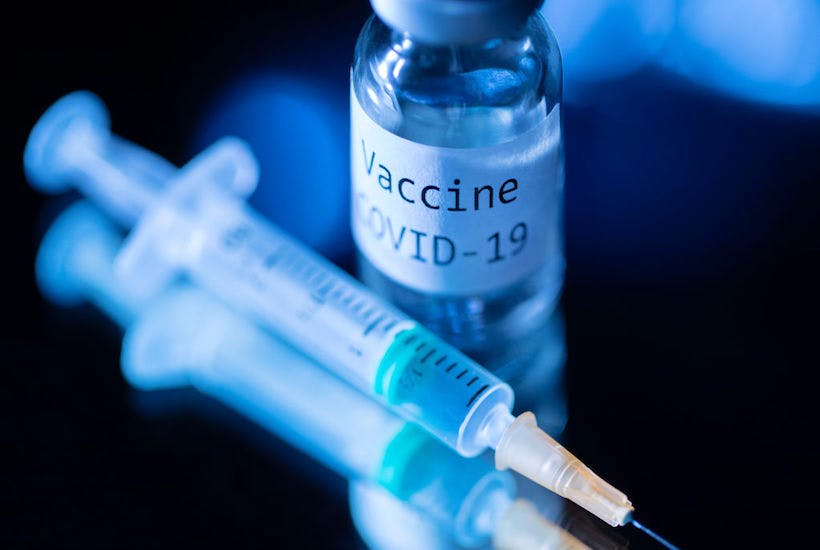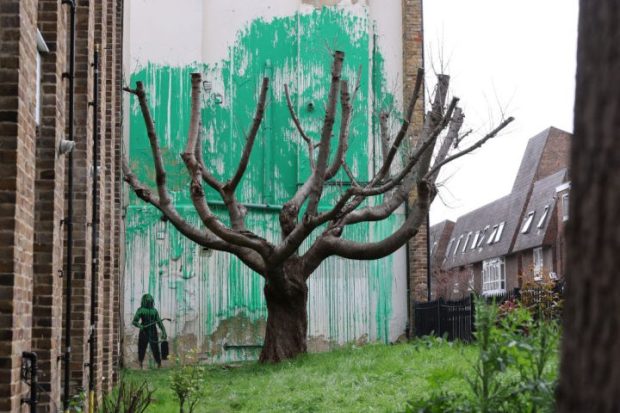Imperial College’s React study was in the news again this morning. The latest instalment swabbed 167,642 people between 6 and 22 January and found that 2,282 of them tested positive. A weighted average suggested that 1.57 per cent of the population had the virus between those dates. The study concluded: ‘Prevalence remained high throughout, but with the suggestion of a decline at the end of the study period’. It led to reports this morning that the latest wave of the epidemic is declining only very slowly.
The React study, however, seems to be increasingly out of line with government data on new infections, as picked up through the test and trace system. On 6 January, the seven day average of new infections across the UK stood at 594.6 per 100,000. By 22 January it had fallen to 358.7 per 100,000 — a drop of 39.7 per cent.
After peaking around the new year, it seems Covid cases in Britain have entered a steep fall, now feeding through to hospital caseload. The number of Covid-positive patients in English hospitals fell 1,491 yesterday: the Health Service Journal describes it as ‘by far the biggest decline recorded since the start of the pandemic’. The previous record was 1,055 on 17 April when the first wave started what turned out to be a steep descent.
‘All seven English regions are now seeing a week-on-week decline in the number of their covid hospital patients for the first time,’ says the HSJ. ‘London’s Covid patients have now dropped 21 per cent since the peak nine days ago, a rate of decline which would see its total fall below the first wave peak within a week, making it — in all likelihood — the first region to achieve that milestone.’
The figures for new infections detected through test and trace do not pick up all infections — they will inevitably miss out many asymptomatic infections.React, by contrast, measures a randomised sample of the population. Could the fall in test and trace figures be an illusion caused, say, by a drop in testing?
The overall number of tests being conducted (including lateral flow tests) was pretty level across the period — although there was a fall in the number of people taking PCR tests, which peaked on 8 January. Steven Riley of Imperial College, who leads the React study, believes the decline in the number of people taking PCR tests — and the resulting fall in new cases being picked up in government data — may be down to changing attitudes on the part of the public. ‘In the run-up to Christmas people were very keen to have the best information; now people have returned to work they may have less time to be tested.’
Then again, you would expect fewer people to come forward to get tested if fewer people are developing symptoms. Moreover, the hospitalisation figures have also started showing a steep decline, in England especially. On Wednesday, the number of people with Covid in English hospitals fell from 32,337 to 30,846 — a drop of 1,491, higher than any fall since the beginning of the epidemic. There are now 10 per cent fewer people with Covid in English hospitals than there were at the peak on 18 January.
Got something to add? Join the discussion and comment below.
Get 10 issues for just $10
Subscribe to The Spectator Australia today for the next 10 magazine issues, plus full online access, for just $10.





















Comments
Don't miss out
Join the conversation with other Spectator Australia readers. Subscribe to leave a comment.
SUBSCRIBEAlready a subscriber? Log in